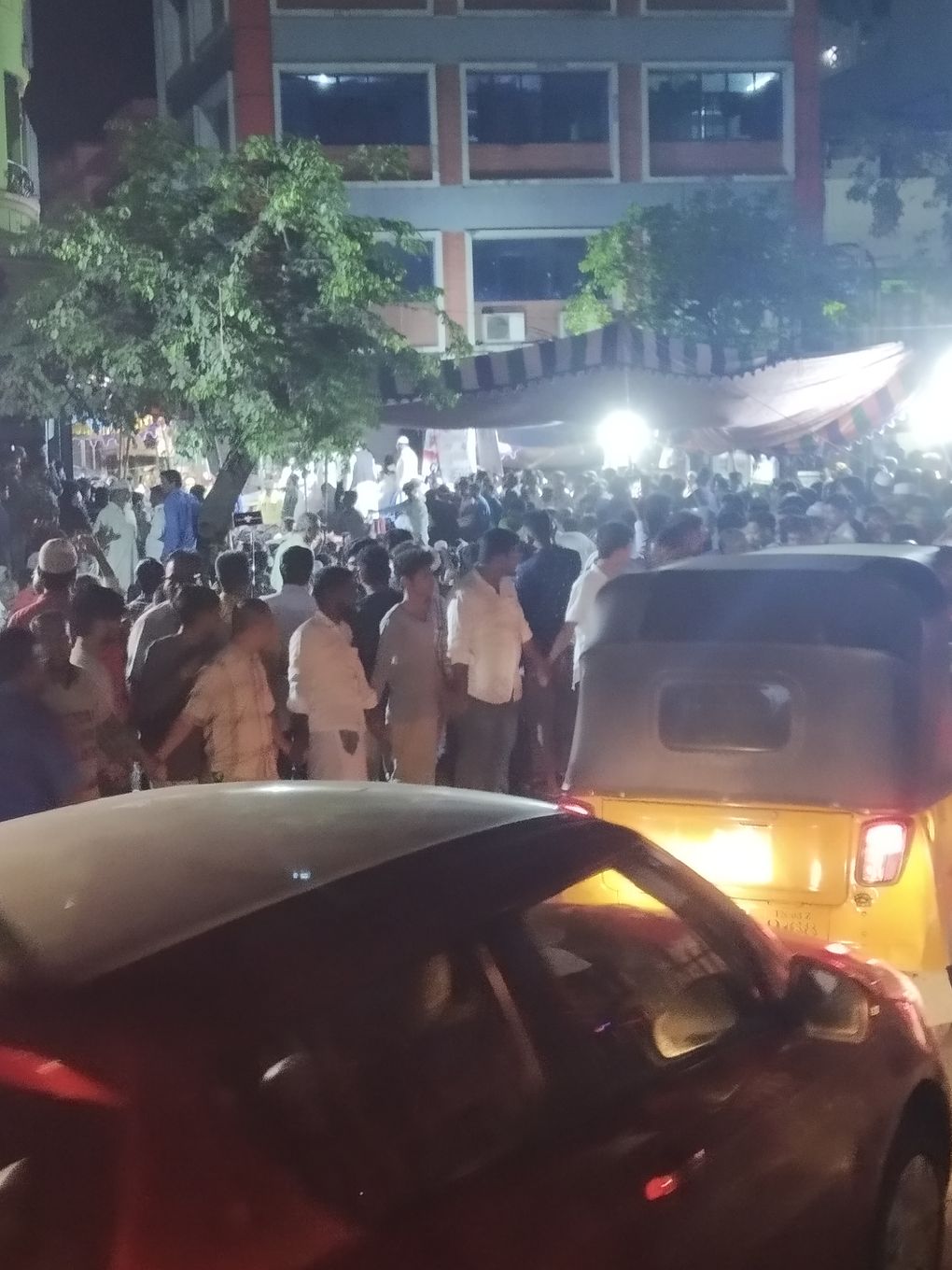Chennai: Standing near the gathering at the protest against the Citizenship Amendment Act (CAA) near a pencil factory at old Washermenpet, Mujib Rehman guides a lorry driver to help keep traffic snarls at bay.
Rehman, a worker at a garment store in Saidapet, pointed towards the Chennai Police jeeps standing across the street and says, “They have officers to beat us up, but none to look after traffic.”
His comments are particularly significant especially after what Justice S.K. Kaul and Justice K.M. Joseph said about Shaheen Bagh protesters “blocking roads” and affecting public movement.
Benazir, a 17-year-old protestor from Thiruvallur, understands that traffic has been affected in the area since the stage is close to the main road. He says that it is a civic duty to make sure that the people of the area do not face any problems due to the protest.
Rukmini, who works at a health facility near Little Mount metro station, says she has ditched car rides and uses the metro instead. “I don’t mind giving up some comfort for the protesters. It is the least I could do. I am a working woman and juggling work and home does not give me enough time to attend the protests. But I support them through social media,” she said.
Every evening after 5 pm, protestors hold hands and silently stand at the periphery of the protest site like a shield, wearing T-shirts which say ‘NO CAA, NO NRC, NO NPR’ to distinguish themselves from their fellow protestors. They’re also armed with orange whistles with blue straps around their necks.
Benazir and 49 other volunteers had been standing at the same spot since 4 pm.
In total, around 200 volunteers work on all the internal and external requirements of the protest. Of these, 50 have been charged with keeping the traffic running smoothly and to ensure no accidents take place.
Also read: Park Circus Maidan: Kolkata’s Shaheen Bagh
An auto driver, who calls himself ‘Auto Illa’ and rides regularly in the area, said that he has no problem with the protest. He supports the cause and does not want them to stop protesting. “It is good that there is no traffic police, because they might try to enter the protest and we do not trust the authorities anymore,” says Rehman.
On February 14, at 8.40 pm, the protestors were lathi-charged. The police beat up women and men when they refused to leave the peaceful assembly. “I can not say what I feel about the protest while wearing this khaki uniform. The policemen, which had acted upon the incident, have been removed and we are under strict orders to not enter the protest area,” says J. Dayanand, a head constable.
Rehman, on the other hand, says that the police left the place only to come back after two days.
The protest was organised by the Social Democratic Party of India but the internal committee doesn’t have any political leader and consists of people from the community.
As to why the area was picked as the spot to hold the Shaheen-Bagh inspired protest, Rukmini says that Washermenpet is a place dominated by Muslims and has a sizeable number of poor people.
The poor in the locality, according to the organisers of the protest, scare the government the most. This is why, they reason, the police can’t really create any kind of violence over there. In fact, Rukmini isn’t sure whether the All India Dravida Munnetra Kazhgham (AIDMK) government is likely to come back to power for a second term after the brutal attack on the protesters.
Srishti Lakhotia is a student at Asian College of Journalism (ACJ).

